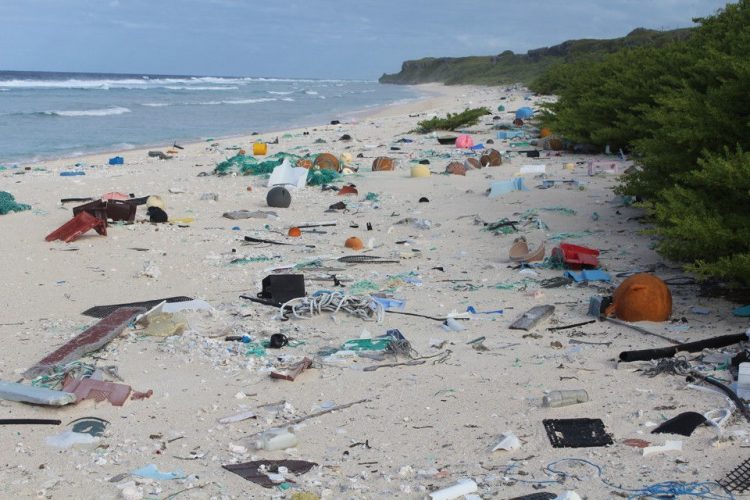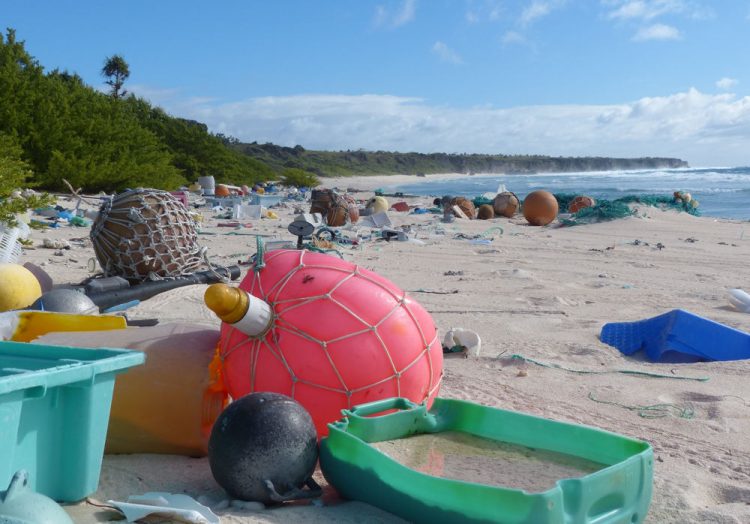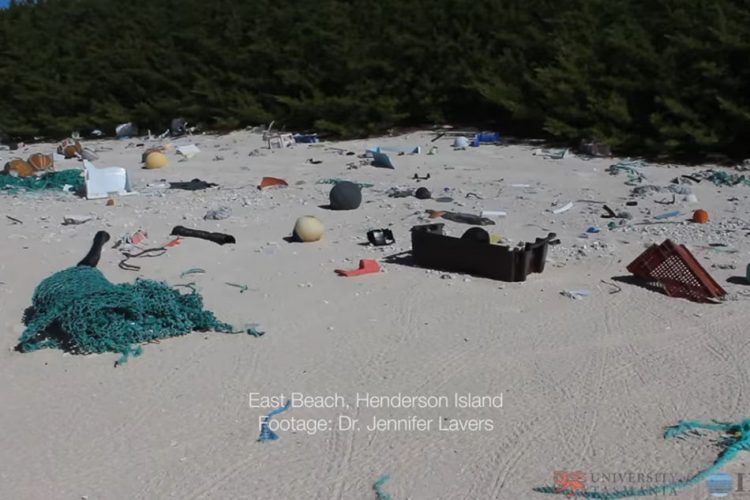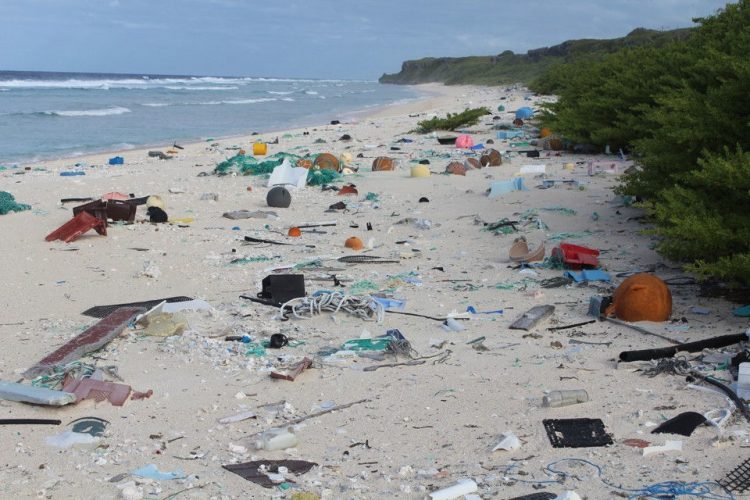One of the last things you would normally expect to find on an uninhabited island in the South Pacific is plastic, and yet the beaches of Henderson Island are riddled with nearly 40 million pieces of plastic, ranging from toothbrushes to shopping bags and bottles.
According to a recent report published in the in “Proceedings of the National Academy of Sciences” journal, Henderson Island currently has zero inhabitants and around 17 tonnes of plastic trash, with around 13,000 pieces washing up on its shores every single day. The tiny patch of land has been found by marine scientists to have the highest density of debris recorded anywhere in the world.

Photo: Jenifer Lavers
“What’s happened on Henderson Island shows there’s no escaping plastic pollution even in the most distant parts of our oceans,” said Dr. Jennifer Lavers from the University of Tasmania. “It’s likely that our data actually underestimates the true amount of debris on Henderson Island as we were only able to sample pieces bigger than two millimeters down to a depth of 10 centimeters, and we were unable to sample along cliffs and rocky coastline.”
Even though Henderson Island is located at the edge of a vortex of ocean currents known as the South Pacific gyre, which are known to capture and hold plastic trash, when a team of marine scientists traveled to the small uninhabited island, they didn’t expect to find tonnes of plastic everywhere. The report co-authored by Dr Lavers mentions all kinds of trash, from hundreds of hard-hats of all shapes, sizes and colors, to toothbrushes, toy soldiers and dominos. For such a remote island, this was unusual, and Lavers describes the sight as both “beautiful and terrifying”.

Photo: Tara Proud/Cosmos Magazine
The expedition that revealed this unlikely plastic graveyard was conducted in 2015, when the marine scientists led by Jennifer Lavers spent three months on the island conducting research. By their calculations, Henderson Island is now home to over 17.6 tonnes of trash, most of which is buried in shallow sediment on the beaches.
Looking at the photos published in the report, it’s hard to accept that this is what a pristine beach on a deserted island in the Pacific looks like these days. But what’s truly frightening is that all of that plastic trash is truly insignificant when looking at the global picture.

Photo: YouTube screengrab
“The 17.6 tons of anthropogenic debris estimated to be present on Henderson Island account for only 1.98 seconds’ worth of the annual global production of plastic,” Lavers and her team write in the report.
“We need to drastically rethink our relationship with plastic,” Dr. Lavers said. “It’s something that’s designed to last forever, but is often only used for a few fleeting moments and then tossed away.”
The Australian scientist added that she was so appalled by what she saw on Henderson Island that she has since replaced plastic with more environmental alternatives. For example, she is now using a bamboo iPhone case and toothbrush. It doesn’t sound like much, but if everyone did the same thing, it would actually have an impact.













